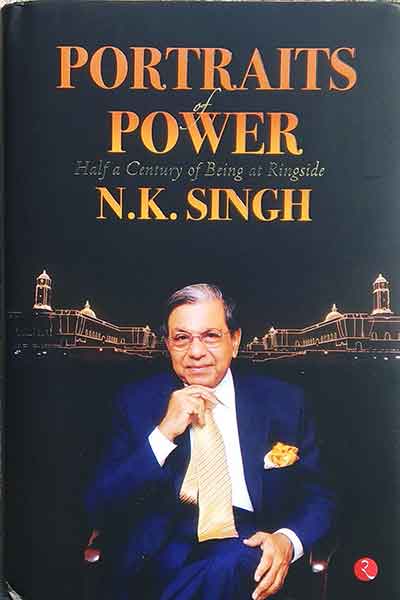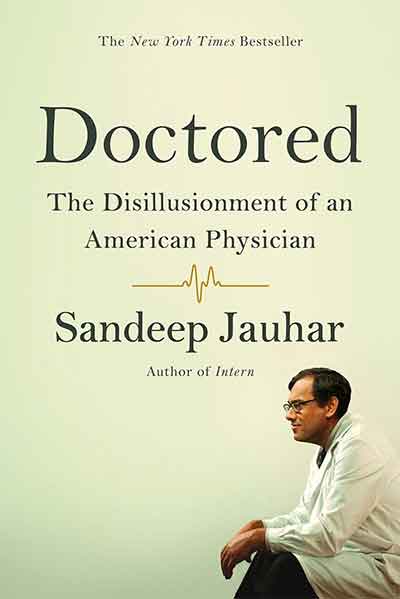
Autobiographies by bureaucrats every so often raise curiosity for the reason that they hide more than they reveal, even as the sequestered information and the behind the scene camaraderie in day to day governmental functioning is a lot sensational. In recent years, India’s top civil servants have been writing their memoirs. But they have only been penned only after being pensioned off.
“Portraits of Power – Half a Century of Being at Ringside” by NK Singh (Rupa, New Delhi) is a life-story that everyone was looking forward to. Singh was a formidable civil servant, a compassionate politician, a keen chronicler of India’s socioeconomic history and an archetypal academic that the academic world never picked up. Being a thoughtful work, Singh’s autobiography is an important landmark in a similar genre.
‘Portraits of Power’ has Singh’s various stints over the decades – starting in 1964 when he joined the IAS, serving as one of the highest echelons of the government of India before taking a political plunge with the Rajya Sabha term.
In addition to being a prominent politician and economist, Narendra Kumar Singh is currently the chairman of the Fifteenth Finance Commission of India. He has been among the country’s top administrators and has handled important portfolios – from secretary to the prime minister, expenditure and revenue secretary and member of the Planning Commission. As well as being the principal interlocutor with multilateral institutions during India’s 1991 balance of payments crisis, Singh has rightly been at the ringside of power for fifty long years.
Reads the blurb: “Portraits of Power is not just an autobiography of a man, who for several decades has played an active role in India’s march towards becoming a formidable economy; it is indeed, on multiple levels, a book that profiles myriad institutions that work in harmony to make things happen. And in everything that N.K. Singh has done, so in this book too, there is both incisive clarity and insightful anecdotal heft.”
This life account is weighty for several reasons: One, Singh’s varied life and work – as chronicled in the book – has been entwined with the headway India has made in the last five decades. Two, in many such circumstances, Singh has not only been an active contributor but has also given outlines to those momentous decisions. The book is also an account of the use of diplomacy, the mechanism of power and the rigidities of understanding its levers and, most important, how consensus building has been his forte.
From personal events to national engagements, “Portraits of Power” covers it all. It presents the saga of Singh’s early life and his public policy engagement for over five decades. The author’s interactions with Prime Ministers from Rajiv Gandhi, V.P. Singh and Narasimha Rao to H.D. Deve Gowda and Atal Bihari Vajpayee find fabulous mention in the book. What is more, it focuses on India’s economic and social progress over a long period of time.
Singh who served in the Prime Minister’s office as Vajpayee’s Secretary from 1998-2001, closely traces the origin of the Prime Minister’s office and its growing influence over the decades from the start under Shastri, to the all-powerful PMO of Indira Gandhi era, the course correction under Morarji Desai, the ‘altered’ political equations of a ‘low key’ PMO under Dr Manmohan Singh and the Modi PMO which leads to a questioning of the Westminster model itself.
According to Singh, Nehru’s Prime Minister’s Secretariat (PMS) was not significant since he believed in the institutional structure of the Cabinet office, which he had inherited. Writes Singh “In fact, in 1958–59, the strength of the PMS was reduced to 129, and in 1961, Nehru reduced it further to just over a hundred. This further strengthened the office of the cabinet secretary, who had legitimacy in his advisory role, considering that the rules of Allocation of Business (AoB) described his office as the secretary to the Council of Ministers.”
Things, however, changed when Laxmi Kant Jha, then Secretary of the Department of Economic Affairs, was appointed for the first time as first Secretary to PM by LB Shastri in July 1964 – bringing a “spectacular difference in hierarchy.” The PMS now has a different status with a new insertion in the Allocation of Business Rules.
P N Haksar’s long years stint as Secretary to PM Indira Gandhi created the concept of committed officers, says Singh in the book: “Haksar had convinced Mrs. Gandhi that it was the only way to govern, subjugate and rise in stature. The days of the “goongi gudiya” (mute doll), a pejorative term used to describe her on her assumption of office, were now a far cry. She rose in stature as indeed did this model of governance.”
Singh feels that the May 2014 election, which started in the Modi era, brought in a new PMO whose complexion had changed. Says the book: “It reflects the personality and style as well as the implementational capabilities of the PM. The PMO has had the difficult task of coping with new challenges—the punishing schedule of PM Narendra Modi and, more importantly, the scrutiny and implementation of programmes and special initiatives undertaken by various ministries and entities.”
He refers to PK Mishra as a “solution-seeker” who does so while fully observing the rules of the game and with integrity not only towards the Constitution, but also the AoB rules. While remarking ‘PK’s rapport and unalloyed trust with the PM, he points to another important change in the Modi era: the creation of a new position of the principal advisor, now occupied by Pradeep Kumar Sinha, the former cabinet secretary. “The PKs—Mishra and Sinha—make for a harmonious cohesive team, lending support to the PM’s vision to make India an important global powerhouse, “writes Singh.
Referring to Modi’s overwhelming electoral victory in the 2019 Lok Sabha polls, Singh proffered the argument further on the Westminster model. Says the book :“It is not unnatural that critics and PM Modi’s authoritarian style , as we are witnessing a rise of dominant leaders all over the world, like Donald Trump, Vladimir Putin, Xi Jinping, Recep Tayyip Erdogan and Boris Johnson, to mention a few. If the Westminster model is in terminal decline, so be it. In the end, what matters are the preferences expressed by the people through a democratic process and a renewal of their mandate through periodic elections.
With a protracted career in the civil service, NK Singh’s life story also chronicles the few crucial decades in the life of the nation. The book is much more than a grandstanding view of how India has evolved socio-economically. Singh’s humorous and anecdotal style enriches the recapping of both the personal and the political.
Singh writes about how his formative years were shaped by the contrasting influences of academic rigor on his paternal side and the Zamindari affluence of his mother’s family, with the highly feudal Bihari society forming the backdrop. He narrates the amusing scene at home when he got selected as a civil servant at 23. While most debated whether he should opt for IAS or IFS, his headmaster grandfather insisted that he go for the legal profession.
The book, all 400 pages long, is a timepiece and, in many ways, explains the important changes in India’s liberalization process and the challenges encountered by political entities. A dependable account of India’s liberalization, Singh has been among some of India’s top movers and shakers. If Singh’s strident strategies have enabled India to play an important role in the fast-changing global economic landscape, the book has all those details.
For being an excellent narrator of India’s economic and political strategies, from the days of independence to Covid-19, the book is captivating. Singh’s elephantine memory and unbiased approach has given the volume a silver lining.
‘Portraits of Power’ will come handy in navigating the vast complexities of India’s power arrangement. Profound, analytical and thought-provoking, it is an indispensable read for anyone interested in the country’s spectacular growth.
Portraits of Power
NK Singh
Rupa Publications India
2020
Rs 595
Bhaskar Parichha is a journalist
IF YOU LIKED THE ARTICLE SUPPORT PEOPLE’S JOURNALISM
















































